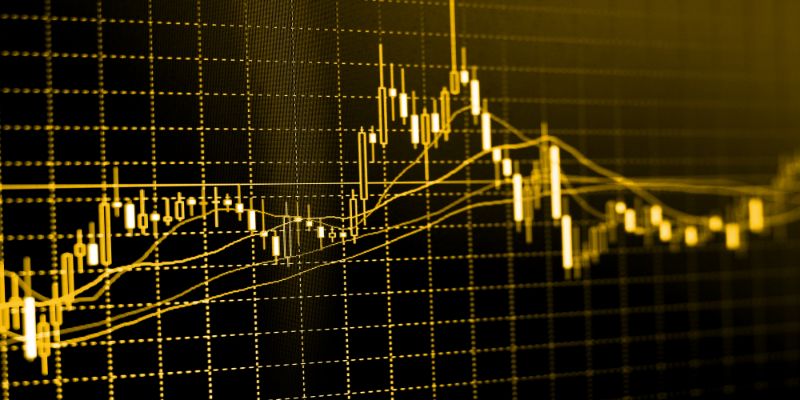
There is always some risk associated with an investment, although some are riskier than others. Alternative investment methods and products are examples of high-risk investments since they use nontraditional means of generating a return on investment. Investments with a greater potential for loss may be promoted as offering bigger rewards.
Keep in mind, however, that investment returns are always subject to change and can be affected by variables beyond anyone's control. Common investment products, even those with sound risk management and solid business plans, can fall short of investor expectations.
Although market volatility is a fact of investment life, it never gets easier. It's discouraging to watch the value of your investments drop overnight, whether you're just getting started saving or have been doing so for decades. When the market is rising steadily, it can be tempting for investors to overestimate their risk tolerance. Here are the best high-risk, high-reward stocks for investors you can invest in.

Best High-Risk Stocks For Aggressive Investors In 2023
Mutual Funds
Investors pool their money in a mutual fund, which then invests it in various securities per its investment strategy. Via a diverse portfolio, these funds can give investors access to various financial products. Because of this strategy, the portfolio's risk is reduced. Equity-focused mutual funds, on the other hand, carry a great deal of uncertainty. They can, however, yield substantial profits.
Another important fact to remember is that mutual funds have professional portfolio managers. It prevents them from trading effectively in the stock market or with other financial instruments. Aggressive investors can also put their money into exchange-traded funds and alternative investments like hedge funds and private equity.
Investing In Options
High returns can be made by those who attempt to time the market with options. Option buyers have the right, at some point, to purchase the underlying stock or commodity equities at the option's strike price. If the future value of the underlying asset does not meet the investor's expectations, they are free to buy or sell the underlying option security at any time.
It is risky because buying and selling securities have time constraints. Options can be risky or lucrative depending on how you use them, so many financial experts advise against trying to time the market.
Stocks
Aggressive investors often choose stocks due to their potential for high profits. Yet, stock markets are highly unpredictable and risky. Aggressive investors favor equities, especially small-cap stocks, because of the possibility of large financial profits.
However, remember that these financial instruments' inherent risk is substantial due to extreme volatility. As a result, before putting money into stocks, people should do their homework and undertake fundamental and technical analysis. Investors who wish to put their money in stocks should be ready to absorb both large losses and gains.

Foreign Markets
Putting money into a country with a rising economy can pay off handsomely. Government bonds, stocks, or sectors in a country experiencing hyper-growth, or exchange-traded funds (ETFs) that reflect a growing sector of stocks are all options for investors. Growth spurts in countries are unusual occurrences that, despite their inherent danger, can present investors with a wealth of exciting new companies to diversify their holdings.
The greatest threat to developing economies is the possibility that the current phase of rapid expansion could end sooner than expected, resulting in underwhelming returns for investors. It's possible for the political climate to quickly shift in countries experiencing economic booms, altering the economy that had previously fostered growth and innovation.
Currency Trading
The emotional trader or investor may choose to avoid the high-risk atmosphere of currency trading and instead leave it to the pros. Those confident in their ability to deal with the additional stress of currency trading should investigate the trends of individual currencies before making any investments. Because of the interconnected nature of the currency markets, investors often hedge their bets by shorting one currency and longing for another.
Trading currencies, or forex as it is more commonly known, is not a hobby for amateurs. Leverage can be very high in the currency market. Brokers commonly provide leverage of 50:1, which increases the potential for loss for investors if the leverage is misused.
Potential Risks and Rewards from Aggressive Investment
A high risk could lead to a high return when using an aggressive investment approach. Individuals who use this method must be comfortable taking on additional uncertainty to increase their potential reward. Aggressive investment carries a bigger risk of financial loss but has greater upside potential.
Aggressive investing can help those with a high-risk tolerance reach their financial goals. Consider your level of comfort with risk before making any rash financial decisions. An investor's risk tolerance is measured by how well they can stomach losses, market volatility, and other forms of uncertainty.
Those who can't stand losing their money should look into safer alternatives. Yet, investors with a higher risk tolerance can be fine with taking on more danger in the hopes of more reward.
Conclusion:
Some people can't handle the uncertainty of high-risk investing. These investments may have a significant risk of loss and the possibility of high profits. Even though high-risk stocks can be attractive, it is often wise to first perform one's research. The equity portion of a portfolio constructed using this method is the largest. Thus, investors avoid it as much as possible.
You might be able to diversify your portfolio to include some higher-risk investments and continue to keep holdings with a lesser potential loss. Such a technique can greatly increase a portfolio's returns if executed correctly. But, before attempting this method, one must consider how much they are willing to sacrifice.



